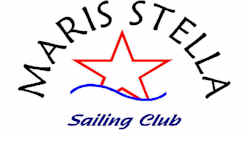|
[ The Club ] [ News From Bookshop ] [ Our Contacts ] [ Next Door Friends ] [ Ocean Sailing ] [ Paul Silver Page ] [ Doctor Fernando ] [ Charley News ] [ Muni Fashion ] [ Music on Board ] [ Events ! ] [ Cooking on Board ] [ Aid For Navigation ] [ Sail With Us ] [ Search Engines ] [ Curio's ] [ Millenium Calendar ] [ Merry Chrismas ]
Advertisement
Area
| |
 Lat 18°22'N Log
65°55'W Lat 18°22'N Log
65°55'W
Ocean Sailing and Boating by
Albert
 mail to Albert mail to Albert
News from the Oceans,
Send me your comments,
experiences, emotions we give them to all our friends.
 Albert says this Month: December 2000 Albert says this Month: December 2000
Read also: October 1999, November 1999, December 1999, January 2000, February 2000, March
2000, April200,
June2000, August
2000, October 2000
Boat Winterization
by Alberto de Capitani
It is that time of the year again and those of us who are not lucky enough to live in
areas where you can sail all the year round are busy preparing their boat for the winter.
As winterization is a fairly complex process, I find it useful to have a checklist of
things to do.
Unfortunately, there is no such thing as a good-for-all, standard checklist since a great
deal depends on the type of boat you have, what systems you have aboard and the severity
of winter climate in your area.
In my case, I currently have a Beneteau 381 (which I usually leave in the water during the
winter) and live in an area where it often freezes in winter. All I can say about the
attached checklist is that I have used it with some adaptations for the last twenty years
and it has worked for me:
Engine
- Add diesel fuel stabilizer and fill up the fuel tank with about 5% expansion room left
at the top.
- Check/clean up the raw water strainer, check the cooling system
coolant with an antifreeze hydrometer, change the fuel/water separator filter or drain
water from it, change the fuel filter, check/replace the zinc in the heat exchanger,
check/replace the transmission oil, grease the dripless shaft seal, run the engine to
achieve normal operating temperature, change the engine oil and the oil filter, run the
engine briefly, check the oil level and add oil if needed, close the raw water intake
seacock, remove the intake hose from the seacock, insert an extension hose connected to
the intake hose into a bucket of antifreeze solution (propylene glycol antifreeze is
environmentally safer than automotive type ethylene glycol base), run the engine briefly
until the antifreeze solution starts to be expelled from the exhaust, put the intake hose
back, slacken the alternator belt, plug the exhaust pipe with a rag, spray the engine with
WD40.
- Take the dinghy outboard motor home, flush the cooling system with fresh water, remove
the gasoline from the tank, remove and clean the spark plug, inject fogging fluid into the
carburetor and the cylinder, lubricate the carburetor and choke linkages, drain the old
gear oil from the lower unit, add fresh gear oil.
Plumbing System
- Clean up the strainers in the bilge, shower and fresh water pumps.
- Clean/sterilize the heads, close the intake seacock, pump out any
residual sea water, pour some head lubricant or antifreeze mixed with fresh water into
the toilet bowl, pump out 2-3 times to spread the lubricant on the internal parts, close
the discharge seacock.
- Empty the fresh water tanks, disconnect the water heater from the fresh water system,
drain the water heater, connect and clamp the hot and cold water hoses together to bypass
the heater, pour two gallons of non toxic antifreeze solution into each water tank, open
both tank selector valves on the manifold, turn on the fresh water pump, open each hot and
cold outlet (including the stern shower) starting from the outlets furthest from the tanks
until the antifreeze runs through, pour antifreeze into the sink drains, close the
discharge seacocks.
- Drain the residual water from the deck wash pump (with the intake seacock closed).
- Remove the depthfinder and knotmeter transducers, clean them and replace them with their
respective plugs.
- Pump out any water left in the bilge, clean and dry up the bilge.
- Make sure that all seacocks are closed, including the engine raw water intake and the
water intake for the dripless shaft rotary seal.
Galley, Cabins, Salon
- Remove food, drinks and all perishable items from the boat.
- Sterilize both the refrigerator and the freezer, place a glass of baking soda (or other
deodorizer) in each, leave the lids open for ventilation.
- Clean the stove thoroughly, close all valves, depressurize the propane system, clean the
propane tanks, apply a light layer of WD40.
- Place a glass of baking soda in each head, in each cabin, inside the galley cabinets and
inside the cockpit starboard locker.
- Spray silicon on porthole gaskets and other rubber fittings to keep them soft.
- Close all hatches and portholes.
- Apply curtains to all hatches and portholes to protect the boat interior from the sun.
- Leave all cushions propped up on edge to allow ventilation.
- Leave all interior lockers clean and open for ventilation.
Electrical System
- Check/add distilled water in both batteries, clean the battery terminals, apply a
protective layer of petroleum jelly.
- Turn off the battery main switch, but leave the battery charger on.
- Make sure that the automatic switch of the electric bilge pump is operating properly.
Sails and Deck Gear
- Remove the sails, wash them with mild soap, let them dry thoroughly, check whether any
re-stitching or other repair is needed, fold them and store them below.
- Remove and store below the dodger and the bimini.
- Remove and store below the radar reflector, the life ring and the man over -board pole.
- Remove the steering wheel, spray the wheel leather cover with silicon, apply the brake,
store the wheel below.
- Cover the compass, depth finder, knometer and wind instrument with their plastic covers
and make sure that they are well protected against rain and snow.
- Check and lubricate (with engine oil) the steering wheel chain, the autopilot chain and
the steering quadrant.
- Spray WD40 on the rudder stock plastic gaskets.
- Store the dinghy below or ashore.
Miscellaneous
- Wash the deck, repair gelcoat nicks where rain could penetrate and autopilot chain and
the steering quadrant.
- Cover the cockpit (make sure that air circulation is allowed and pooling of water or
snow is prevented).
- Make sure that fenders are appropriately placed and that mooring lines are protected
against chafe ( fasten the mooring lines to slip piles rather than to the potentially
weaker cleats and leave the bitter ends at the dock to be able to adjust the boatís
position without going aboard).
- Leave the companion way key with the Marina.
Materials Needed for Winterization
- Diesel fuel stabilizer, fuel/water separator filter, oil filter, fuel filter, motor oil,
oil absorbing pads, sacrificial zinc for heat exchanger, grease, WD 40.
- Gearcase lube for outboard motor, fogging oil, gasoline conditioner.
- Antifreeze liquid (propylene glycol) for engine (2 gallons), nontoxic antifreeze for
water systems (4 gallons).
- Baking soda, silicon spray, covers for cockpit.
[ Home ] [ Up ] [ Albert News August 2000 ] [ Albert News October 2000 ] [ Albert News Dec 2000 ] [ Albert News February 2001 ] [ Albert News Oct 99 ] [ Albert News Nov99 ] [ Albert News Dic99 ] [ Albert News Jan2000 ] [ Albert News Feb 2000 ] [ Albert News March 2000 ] [ Albert News April 2000 ] [ Albert News June 2000 ]
|
 MARIS STELLA SAILING CLUB
MARIS STELLA SAILING CLUB